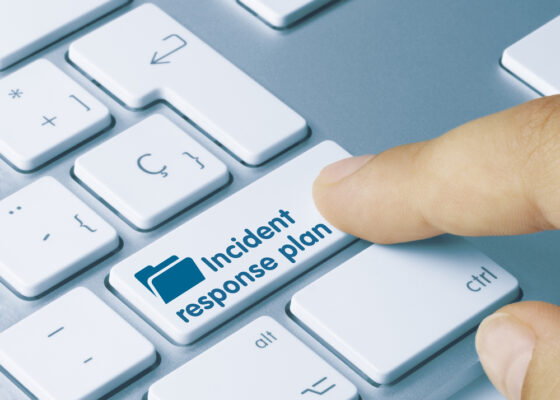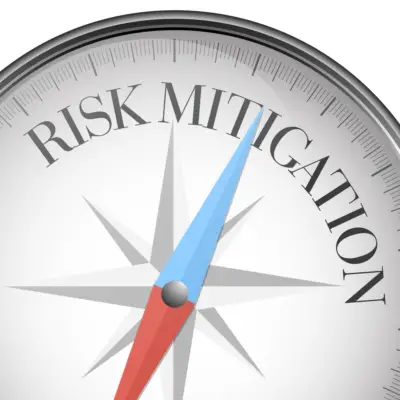Importance of incident management workflow in risk management
In risk management, the incident management workflow stands as a critical pillar, providing a structured approach to handle and mitigate potential risks effectively.
Professional risk practitioners understand that incidents, whether security breaches, system failures, or natural disasters, can wreak havoc on an organization’s operations and reputation if not managed swiftly and efficiently.
The incident management workflow serves as a comprehensive framework that guides risk practitioners through the entire incident response lifecycle, from identification to resolution.
Organizations can minimize the impact of incidents, protect their assets, and maintain business continuity by following a clearly defined process.
Why is the incident management workflow so crucial in risk management? The answer lies in its ability to streamline the incident response process, enabling risk practitioners to take proactive measures to prevent further damage and ensure timely recovery. Without a structured workflow, incidents may spiral out of control, resulting in prolonged downtime, financial losses, and a tarnished reputation.
By following a systematic approach, risk practitioners can effectively navigate the complexities of incident response, ensuring that each step is properly executed.
This includes identifying and recognizing incidents, assessing their severity and impact, developing response plans, implementing immediate actions, communicating with stakeholders, documenting details, and conducting post-incident reviews.
Risk practitioners can gain valuable insights through each stage of the workflow, improve their incident management capabilities, and enhance their organization’s overall resilience.
Moreover, the incident management workflow promotes collaboration and coordination among stakeholders, including the incident management team, IT departments, legal counsel, and senior management.
This synergy allows for a unified response, where each party contributes their unique expertise and resources to address the incident effectively.
In today’s fast-paced and interconnected world, where organizations face an ever-increasing array of risks, it is paramount for risk practitioners to have a robust incident management workflow in place.
This enables them to respond promptly and effectively to incidents and provides a roadmap for continuous improvement and proactive risk mitigation.
In the following sections, we will delve deeper into the incident management workflow, exploring its key components, the incident response process, and the significance of each stage.
After going through this process, you will gain a clear understanding of how it can help risk professionals confidently and efficiently handle incidents during the response phase.

Understanding the Incident Management Workflow
In risk management, the incident management workflow plays a crucial role in ensuring the smooth operation of organizations.
It is an essential process that helps identify, assess, respond to, and learn from incidents that may pose risks to the business. Professional risk practitioners understand the significance of a well-defined incident management workflow in safeguarding the interests of their organizations.
Definition of Incident Management Workflow
The incident management workflow can be defined as a systematic and structured approach to handling incidents within an organization.
It encompasses a series of interconnected steps and activities designed to effectively manage and mitigate the impact of incidents on business operations.
Organizations can ensure a consistent and coordinated response to incidents by following a predefined workflow, minimizing their potential adverse effects.
Key Components of the Workflow
To fully comprehend the incident management workflow, it is imperative to explore its key components. These components are building blocks, enabling risk practitioners to navigate the incident management process with precision and efficacy.
- Incident Identification and Reporting: This initial phase involves identifying and recognising incidents that have occurred or have the potential to occur. Risk practitioners employ various tools and techniques to detect and report incidents promptly. Whether through incident management systems or establishing incident reporting procedures, efficient identification and reporting is paramount.
- Incident Assessment and Classification: Once an incident is identified, assessing its severity and impact on the organization is crucial. Risk practitioners evaluate the incident based on predefined criteria to understand its potential risks and prioritize their response accordingly. Organizations can allocate resources and attention appropriately by classifying incidents based on priority and risk level.
- Incident Response and Mitigation: This component focuses on developing comprehensive incident response plans that outline the necessary actions to respond to specific incidents. It involves implementing immediate and effective response strategies to mitigate the incident’s impact and prevent further escalation. Through proactive measures and swift decision-making, risk practitioners can control and address incidents in a timely manner.
- Incident Communication and Documentation: Effective communication is vital during incidents to ensure coordination among stakeholders, including the incident management team. Various communication channels are utilized to disseminate information and updates promptly. Documenting incident details and actions taken is also essential for future reference, analysis, and compliance purposes.
- Incident Review and Lessons Learned: After an incident has been resolved, it is crucial to conduct a post-incident review. This involves analyzing the root causes of the incident and identifying areas for improvement within the risk management process. By incorporating lessons from past incidents, organizations can enhance their incident management workflow and strengthen their overall risk management practices.
Overview of the Incident Response Process
The incident management workflow is closely intertwined with the incident response process. It provides a structured framework within which incident response activities occur. The incident response process can be summarized as follows:
- Preparation: Organizations establish incident management policies, procedures, and teams to ensure readiness for potential incidents.
- Detection: Incidents are detected through various means, such as monitoring systems, user reports, or automated alerts.
- Analysis: Risk practitioners assess the nature and severity of the incident, investigating its potential impact on the organization.
- Containment: Immediate measures are taken to contain the incident and prevent further damage or spread.
- Eradication: The incident’s root cause is identified and eliminated to prevent its recurrence.
- Recovery: Systems and processes affected by the incident are restored to normal operations, minimizing downtime and disruption.
- Post-Incident Activities: A thorough review is conducted to analyze the incident response effectiveness and identify areas for improvement.
Organizations can effectively manage and reduce the impact of incidents by following a structured incident response process. This helps to safeguard their operations and minimize potential risks.
Understanding the incident management workflow is crucial for professional risk practitioners. It empowers them to navigate the complexities of incident identification, assessment, response, and learning.
organizations can effectively mitigate risks and maintain a resilient operational environment by implementing a well-defined incident management workflow and embracing continuous improvement.
Continue reading about the incident management process and explore the tools and techniques that can enhance incident management capabilities.
Incident Identification and Reporting
Identifying and Recognizing Incidents
In risk management, the ability to swiftly identify and recognize incidents is paramount. Incidents, in this context, refer to any unexpected events or occurrences that have the potential to disrupt the normal flow of business operations or pose a threat to the organization’s assets.
For professional risk practitioners, honing the skill of incident identification is an essential part of their role. They must possess a keen eye for detail and a deep understanding of the organization’s risk landscape. By staying vigilant and being proactive, they can effectively spot the early warning signs of potential incidents before they escalate into major crises.
Recognizing incidents requires a comprehensive understanding of the organization’s operations, systems, and processes.
Risk practitioners must be well-versed in the intricacies of the business and possess a broad knowledge of the various risk domains. This knowledge allows them to identify deviations, anomalies, or sudden changes that could indicate the presence of an incident.
Risk practitioners can leverage various tools and technologies to aid in incident identification. These incident management tools are designed to monitor systems and networks, detect unusual behavior, and generate alerts when potential incidents arise.
Incident Reporting Procedures
Once an incident has been identified and recognized, risk practitioners must follow proper incident reporting procedures. Timely and accurate reporting is essential to ensure the incident management team responds promptly and effectively.
Reporting an incident involves documenting all relevant details about the event, including its nature, severity, and impact. This information serves as a foundation for subsequent incident response and mitigation efforts.
Risk practitioners must gather comprehensive data, such as the date and time of the incident, the individuals involved, and any supporting evidence or documentation.
Organizations often establish standardized incident reporting templates or forms to streamline the incident reporting process. These templates provide a structured framework for risk practitioners to record the necessary information systematically.
The organization can ensure consistency and facilitate the analysis and comparison of incidents over time by adhering to a standardised format.
Once the incident report is complete, it should be submitted to the designated incident management system or platform. This system is a centralized repository for incident data and enables efficient tracking, analysis, and reporting.
Organizations can gain valuable insights into incident trends, patterns, and recurrence by using an incident management system. This information can be used to inform future risk mitigation strategies.
Incident identification and reporting are critical components of the incident management workflow for professional risk practitioners.
Through the utilization of incident management tools and systems, organizations can enhance their incident management capabilities and ultimately safeguard their assets and operations.
Incident Assessment and Classification
Once an incident has been identified and reported, the next crucial step in the incident management workflow is the assessment and classification of the incident.
This stage allows risk practitioners to gain a deeper understanding of the severity and impact of the incident, enabling them to allocate appropriate resources and prioritize their response effectively.
Assessing the Severity and Impact of Incidents
Assessing the severity and impact of incidents is a fundamental aspect of incident management. It involves evaluating the magnitude of the incident and its potential consequences on the organization’s operations, reputation, and overall risk landscape.
During the assessment phase, risk practitioners consider multiple factors to gauge the severity and impact of the incident. These factors may include:
- Scope of the Incident: Understanding the extent to which the incident has spread or has the potential to spread within the organization is crucial. This assessment helps risk practitioners determine the scale of the incident and its potential impact on various departments or business units.
- Financial Implications: Assessing the financial implications of an incident is essential for risk practitioners to comprehend the potential monetary losses or costs associated with the incident. This evaluation aids in prioritizing the allocation of resources and determining the financial impact on the organization’s bottom line.
- Operational Disruption: Evaluating the extent to which the incident disrupts or hampers the organization’s day-to-day operations is vital. Risk practitioners must consider the impact on critical processes, systems, and services to manage the incident and minimize operational downtime effectively.
- Reputational Damage: Assessing the potential reputational damage caused by the incident is crucial for risk practitioners. This evaluation allows them to understand the impact on the organization’s brand image and customer trust, enabling them to devise appropriate strategies for reputation management.
Classifying Incidents Based on Priority and Risk Level
Once the severity and impact of an incident have been assessed, risk practitioners classify the incident based on priority and risk level.
This classification enables them to prioritize their response efforts, allocate resources efficiently, and ensure that high-risk incidents receive immediate attention.
The classification process involves assigning each incident a priority level and risk rating. The priority level indicates the urgency with which the incident needs to be addressed, whereas the risk rating reflects the potential harm or damage the incident may cause the organization.
To classify incidents effectively, risk practitioners typically use a combination of qualitative and quantitative criteria. These criteria may include:
- Impact on Critical Business Functions: Assessing the impact of the incident on critical business functions helps determine the priority level. Incidents that significantly impede or halt essential operations are classified as high-priority, while those with minimal impact are considered lower priority.
- Likelihood of Escalation: Evaluating the likelihood of an incident escalating in severity or spreading to other areas of the organization is crucial. Incidents with a high potential for escalation are classified as high-risk, requiring immediate attention.
- Regulatory and Legal Requirements: Compliance with regulatory and legal obligations is crucial in incident classification. Incidents that may result in legal consequences or violations of regulatory requirements are typically classified as high-priority and high-risk.
- Potential Financial Loss: Assessing the potential financial losses associated with an incident helps determine its classification. Incidents that pose a significant financial risk to the organization are classified as high-priority and high-risk.
In the next section, we will explore the crucial steps in incident response and mitigation, where risk practitioners put their incident assessment and classification into action.
Table: Incident Classification Criteria
| Criteria | Classification |
|---|---|
| Impact on Critical Functions | High, Medium, Low |
| Likelihood of Escalation | High, Medium, Low |
| Regulatory and Legal Impact | High, Medium, Low |
| Potential Financial Loss | High, Medium, Low |
Table: Incident Classification Criteria
Note: The criteria and classifications mentioned above are provided as examples and may vary depending on the organization’s specific requirements and industry.

Incident Response and Mitigation
Mitigating and Controlling the Incident
Once an incident has been identified and assessed, it is crucial for professional risk practitioners to develop and execute an effective incident response plan swiftly. This plan serves as a structured guide to navigate the incident management workflow, ensuring that all necessary steps are taken to mitigate and control the situation.
Developing an Incident Response Plan
Developing an incident response plan is a critical aspect of incident management for professional risk practitioners. The plan outlines the specific actions and procedures to be followed when responding to an incident. It serves as a blueprint, guiding the incident management team to address the incident promptly and efficiently.
The incident response plan should be comprehensive and tailored to the unique needs and risks of the organization. It should include predefined roles and responsibilities for the incident management team, clearly outlining who is responsible for what tasks during the response and mitigation process.
Additionally, the plan should incorporate a communication strategy to ensure effective coordination and collaboration among stakeholders.
Implementing Immediate and Effective Response
Once the incident response plan is in place, professional risk practitioners need to implement an immediate and effective response. This requires a swift and coordinated effort from the incident management team to contain and minimize the impact of the incident.
The first step is to activate the incident management team and ensure that all relevant personnel know their roles and responsibilities. This includes notifying key stakeholders, such as senior management, IT personnel, legal advisors, and any other individuals or departments involved in the incident response.
With the incident management team mobilized, they can execute the predefined steps outlined in the incident response plan. This may involve isolating affected systems or networks, collecting evidence for forensic analysis, or implementing temporary security measures to prevent further damage or compromise.
Mitigating and Controlling the Incident
Mitigating and controlling the incident is the ultimate goal of the incident response and management process. Professional risk practitioners must take decisive actions to minimize the impact of the incident and restore normal operations as quickly as possible.
This may involve deploying countermeasures to neutralize the threat, such as applying patches or updates to vulnerable systems, blocking malicious IP addresses, or disabling compromised user accounts. It is crucial for the incident management team to continuously monitor the situation and adapt their mitigation strategies as needed.
In addition to technical measures, effective incident management involves addressing potential legal, financial, or reputational implications.
This may include notifying regulatory authorities, engaging legal counsel, or communicating with stakeholders and customers to ensure transparency and maintain trust.
Professional risk practitioners can navigate the incident management workflow with confidence and resilience by efficiently developing an incident response plan, implementing an immediate and effective response, and actively mitigating and controlling the incident.
Continue reading the next section: Incident Communication and Documentation.
Incident Communication and Documentation
Effective communication and documentation of incidents are crucial aspects of the incident management workflow for professional risk practitioners. This stage ensures that all relevant stakeholders are informed promptly and accurately, enabling them to take appropriate actions to address the incident.
Additionally, proper documentation allows for a thorough analysis of the incident and is a valuable resource for future reference and improvement.
Communication Channels and Stakeholders
Regarding incident communication, risk practitioners must establish clear and efficient channels to disseminate information. These channels may include email, phone calls, instant messaging, or dedicated incident management platforms. The choice of communication channel depends on the urgency, complexity, and size of the incident.
To ensure effective communication, it is necessary to identify and involve the relevant stakeholders throughout the incident management process.
This includes individuals responsible for incident response, such as the incident management team, and other key personnel who may be impacted by or have a vested interest in the incident.
Those responsible for mitigating risks must engage with the necessary stakeholders to gain valuable insights and expertise, which can facilitate prompt issue resolution and minimize the negative impact of any untoward incidents.
Documenting Incident Details and Actions Taken
Accurate documentation of incident details and the actions taken is vital for several reasons. First and foremost, it provides a comprehensive record of the incident, serving as a reference for future analysis and reporting.
This documentation includes essential information such as the date and time of the incident, the individuals involved, the steps taken to mitigate the incident, and any relevant findings or observations.
Furthermore, documenting incident details and actions taken enables risk practitioners to track the progress of the incident management process.
It helps ensure that no crucial steps or information are overlooked and allows for a transparent and accountable approach to incident resolution.
To facilitate effective documentation, risk practitioners can utilize incident management tools or software specifically designed for this purpose.
These tools streamline the process, provide templates for incident reports, and offer features such as automated notifications and data analysis.
Incident communication and documentation are vital components of the incident management workflow for professional risk practitioners. By establishing clear communication channels and involving the relevant stakeholders, risk practitioners can ensure that information regarding the incident is disseminated promptly and accurately.
Simultaneously, proper documentation enables a thorough analysis of the incident and is a valuable resource for future reference and improvement.
Incident Review and Lessons Learned
After an incident occurs, risk practitioners must conduct thorough post-incident reviews. These reviews play a vital role in understanding the incident and identifying areas for improvement in the incident management workflow.
Organizations can enhance their risk management processes by analyzing the root causes and incorporating the lessons learned and better prepare for future incidents.
Conducting Post-Incident Reviews
Post-incident reviews serve as a critical step in the incident management workflow. They allow the incident management team to reflect on the incident, evaluate their response, and identify any gaps or weaknesses in their procedures.
These reviews involve a comprehensive examination of the incident from start to finish, ensuring that all aspects are carefully analyzed.
During the review process, risk practitioners delve into the finer details of the incident, seeking to understand the sequence of events, the decisions made, and the actions taken.
This meticulous examination allows them to gain insights into the effectiveness of their incident management process and identify areas that require improvement.
Analyzing Root Causes and Identifying Improvement Areas
One of the primary objectives of post-incident reviews is to uncover the root causes of the incident. This involves meticulous analysis of the contributing factors that led to the incident’s occurrence. By identifying the root causes, risk practitioners can develop targeted strategies to prevent similar incidents in the future.
Risk practitioners scrutinize various factors during the analysis phase, such as human error, process vulnerabilities, and technological shortcomings.
This comprehensive evaluation enables them to understand the underlying causes and develop effective mitigation strategies. It also helps identify improvement areas within the incident management workflow, ensuring that future incidents can be managed more efficiently.
Incorporating Lessons Learned into the Risk Management Process
Post-incident reviews serve as invaluable sources of knowledge and experience. They provide an opportunity to extract valuable lessons from the incident and incorporate them into the risk management process. By capturing these insights, organizations can enhance their incident management practices and strengthen their overall risk management framework.
Lessons learned from post-incident reviews can be utilized to update incident response plans, refine communication strategies, and implement changes to existing processes. These adjustments ensure the organization is better equipped to handle future incidents and minimize their potential impact.
In conclusion, post-incident reviews are an essential component of the incident management workflow for risk practitioners. Through these reviews, organizations can analyze incidents, identify root causes, and incorporate valuable lessons learned into their risk management process.

Conclusion
In conclusion, the incident management workflow plays a crucial role in risk management. It provides a structured and systematic approach to effectively handle and mitigate incidents that may arise within an organization.
The incident management workflow begins with the identification and reporting of incidents. This phase establishes robust incident reporting procedures and channels to facilitate seamless communication.
Once incidents are identified and reported, the next step is their assessment and classification. Risk practitioners must assess the severity and impact of incidents to determine the appropriate level of response.
Organizations can allocate resources effectively by classifying incidents based on priority and risk level and prioritising their actions accordingly.
Risk practitioners develop and implement an incident response plan in the incident response and mitigation phase. This plan outlines the steps and strategies to respond to different types of incidents, ensuring that immediate and effective actions are taken to control and mitigate the situation.
Implementing the plan requires coordination among the incident management team, stakeholders, and relevant parties.
Clear and effective communication is vital throughout the incident management workflow. Establishing communication channels and identifying stakeholders ensures everyone is informed and involved in the incident management process.
Documenting incident details and actions provides valuable information for future reference and analysis.
Post-incident reviews are a crucial part of the incident management workflow. Incorporating lessons learned from past incidents into the risk management process allows organizations to enhance their overall resilience and prevent similar incidents from occurring.
In summary, the incident management workflow is a comprehensive framework for risk practitioners to address and manage incidents effectively.
As risk practitioners continue to refine their incident management processes and leverage advanced incident management tools and systems, they will be better equipped to navigate the dynamic landscape of risk and ensure a safer and more secure environment for their organizations.
For more information on incident management, please visit our blog on incident management process.

Chris Ekai is a Risk Management expert with over 10 years of experience in the field. He has a Master’s(MSc) degree in Risk Management from University of Portsmouth and is a CPA and Finance professional. He currently works as a Content Manager at Risk Publishing, writing about Enterprise Risk Management, Business Continuity Management and Project Management.

